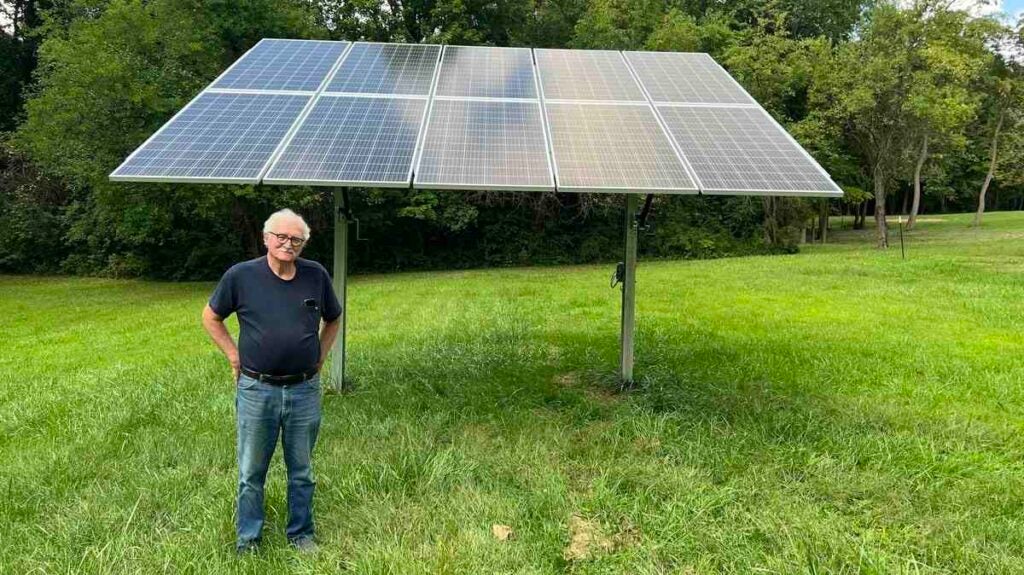The game-changer: Winning the biggest solar bill in a generation


Solar supporters had an opportunity to pass ambitious legislation that would invest in distributed solar energy so that more Americans could benefit from solar energy. To achieve this, Solar United Neighbors helped develop a vision: to power one-in- four American households with rooftop or community solar in the next decade. And so, the 30 Million Solar Homes (30MSH) campaign was born. Our campaign fought hard to make sure rooftop and community solar would be included in any federal climate or energy bill. It came to fruition in August 2022 with the passage of the most important solar bill (the Inflation Reduction Act or IRA) in a generation. It included several key provisions that SUN and the 30 MSH campaign had pushed for. It ensures that more American families than ever will be able to harness the power of the sun. We had a conversation with Katie Kienbaum, Senior Researcher at the Institute for Local Self-Reliance, about our work together on this massive federal solar policy win.
Where did the idea for this campaign come from?
In the spring of 2020, we were thinking about the economic impact of the pandemic and folks’ needs relating to energy, issues like racial and economic inequality, as well as the ongoing climate crisis. We knew that an equitable deployment of local rooftop and community solar could really go some way towards addressing those issues.
John Farrell, Director of ILSR’s Energy Democracy initiative, came up with the idea of 30 Million Solar Homes. It stuck with people to have a numerical goal in mind. Racism, poverty, or the climate crisis are such large, abstract issues. Having a concrete goal, even if it was ambitious, presented a path. To make it happen, we knew we’d need funding, policy changes, regulatory changes, and a whole broad set of things to happen. It was done to make sure that clean energy would grow equitably and that folks who have been the most harmed by our history of fossil fuels and energy monopolies would actually be able to participate in and benefit from a transition to clean energy.
What were key policy components of our campaign that ended up in the IRA?
A broad range of things. The clean energy tax credits were one of the big ones. Also the changes that allow nonprofits and tax exempt entities like local governments, electric cooperatives, and public utilities to actually access the credits for the first time. We advocated for additional funding, like for the Rural Energy for America Program (REAP). That was exciting to see. And there’s also some funding for affordable housing upgrades (including solar) and local solar for tribal households, which were things we advocated for. One of the bigger things we included in our policy proposal was the National Green Bank idea, which was adapted in the IRA as the Greenhouse Gas Reduction Fund.
What was our campaign strategy, and what worked?
Our campaign was in part successful because of a rising appreciation of the value of local rooftop and community solar. There was an awareness that we needed to build more equitable provisions into climate and energy policy. We shouldn’t just be putting up a bunch of utility-owned solar. And then, our core partner team developed a policy proposal and got more than 300 businesses, organizations, community groups, etc. to sign on in support. We also gathered individuals from across the country to share their support for these policies with their elected officials in Washington. And we engaged the federal administration and staff of different lawmakers to educate and share more about our policy proposal.
What do we still need to work on?
One of the big, big things that we were hoping to see included in the legislation was to change the residential clean energy tax credit so that people who don’t have enough tax liability to claim the tax credit can receive a “direct pay” cash reimbursement. Then there’s just the question of making sure that programs are implemented equitably in a way that aligns with the intent of the legislation. SUN and ILSR are working together on that. Then, separately from the IRA, there’s the question of other state policy needs, like enabling legislation for community solar and fair net metering. This will ensure we don’t shut the door on low- and moderate-income households, who are just now starting to adopt rooftop solar in greater numbers. So we are taking the 30 Million Solar Homes campaign and transitioning to these state-based programs.
Read the full 2022 Annual Report